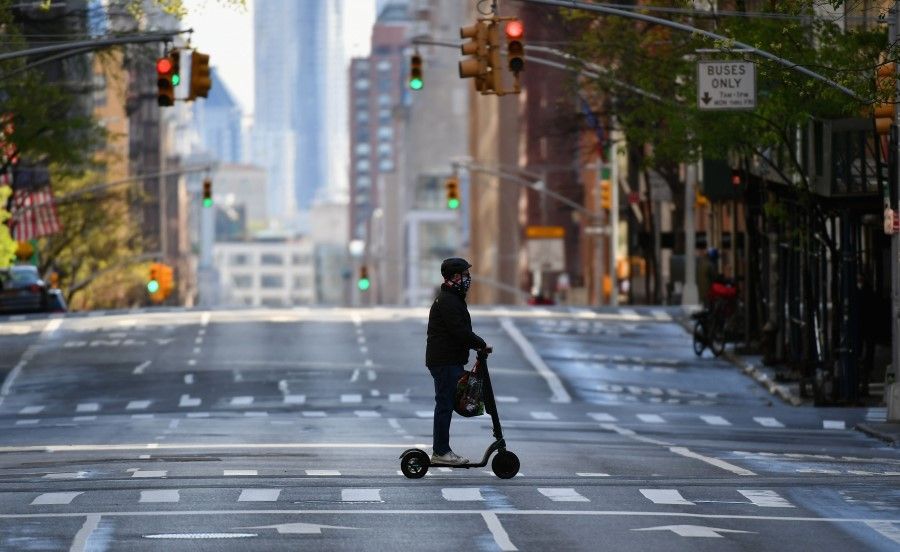The Great Lockdown: How to ensure a speedy recovery?

There is no doubt that the damage caused by the current global pandemic is severe. This global health crisis has brought us economic pain, tragic loss of lives and severe deterioration of health, and on top of that, mass layoffs and furloughs.
To further contain the spread of the virus, countries around the world have implemented a variety of social distancing measures, paralysing most non-essential business activities and putting the world into a "Great Lockdown", as described by economic counsellor and director of the Research Department of the International Monetary Fund (IMF), Gita Gopinath, on the publication of the World Economic Outlook, April 2020. Recent macroeconomic releases already suggest significant damage in terms of economic output: China reported a drop of 6.8% in its first quarter GDP, and a similar number is expected in the US economy.
Simply put, this is a massive recession.
Into the unknown
A global recession is undoubtedly here - what remains to be determined is its duration and magnitude. But the outlook is grim. Earlier last week, the IMF forecast a contraction of 3% in global output in 2020, making the Great Lockdown the deepest contraction since the Great Depression.
Putting the numbers into perspective, during the Global Financial Crisis of 2009, the global output dropped by 0.1%, a vast difference from the severe contraction of 3% estimated for the Great Lockdown. It is expected that 90% of all countries will have a negative per capita growth for 2020.

All advanced economies are expected to have negative growth too. China, amid this global health crisis, is expected to grow at 1%, a sharp drop from its historical trend. The cumulative loss in global output for 2020 and 2021 is, per IMF estimates, US$9 trillion relative to what the world would have produced in normal times. This loss is more than two-thirds of the annual Chinese GDP.
Simply put, this is a massive recession. Each piece of evidence suggests that the damage caused by this pandemic is worse than what we saw during the Global Financial Crisis of 2009 and comparable to the Great Depression of 1929.
V-shaped or U-shaped recovery?
How big will the magnitudes of the economic damage be and will the recovery be V-shaped or an anaemic U-shaped? This is an extremely difficult question to answer because pandemic events are historically rare. It depends on the technology available to policymakers to contain the spread of the virus, and the policy room to accelerate economic recovery. What we can try is to approximate to offer some lower-bound estimates for the economic impact of Covid-19.
A close approximation to the current pandemic would be the deadliest influenza of the 20th century - the Spanish flu of 1918. It infected approximately a third of the world population and killed 50 million people worldwide. Despite being the deadliest influenza in history - 150 million deaths if we apply the fatality rate then to today's population - the recession was documented to be brief and economic output rebounded within months.
For China to recover economically, the world needs to be healthy. For the world to recover economically, China needs to be healthy.
The world then and now is different. Most economies have moved towards services, making the contraction of lockdown policy less severe. Health care facilities are more technically advanced and early detection has helped in reducing the number of deaths.
The speed at which the global economy recovers from this pandemic would depend fundamentally on the joint effort from different countries in containing and fighting the spread of the virus. It would require a joint global effort because consumer confidence can only be restored if there are no fears of additional waves of outbreak. It would require a joint global effort because innovations of vaccines and therapies need to be accessible to both rich and poor nations. To fight against this invisible enemy, it requires international cooperation more now than ever.
Global recovery and China
The current forecast is that China and the global economy would recover in 2021 at 9.2% and 5.8% growth, respectively, providing that the pandemic fades in the second half of 2020. In the current states of the world, any hope of recovery depends on a joint global effort, rather than on isolated efforts of each country in fighting their own public health crisis.
For China to recover economically, the world needs to be healthy. For the world to recover economically, China needs to be healthy. Consumer spending will be restored if households have the confidence that they are safe. IMF estimates that the global output will shrink by 6% instead of 3%, if the outbreak of the virus extends longer into 2020 and comes with new waves of outbreak in 2021. The costs of policy inaction are large.
Trade is the medicine we need for a speedy recovery.

Let trade be the medicine for a speedy recovery
The timing of the pandemic also came at the time of a brewing trade war between China and the US. Restrictions to trade exacerbated the economic impact of a global health crisis and will impede its post-pandemic recovery. The recent export restriction policies of medical devices enacted in the US are counterproductive in the world where the supply chains are globally intertwined. To maximise the provision of medical devices to health care providers, we need more, not less, trade between countries. To ensure that countries have access to the proper provisions to address this health crisis leading to a speedy post-pandemic recovery, we need to make sure that goods and services flow freely across borders. Trade is the medicine we need for a speedy recovery.
The damage of the current pandemic is large, both in terms of economic output and the tragic loss of lives and jobs. The current economic outlook is gloomy. However, the ability to overcome this outlook is within our power. That is precisely the purpose of any economic forecast. With proper implementation of effective public health policies and sound macroeconomic policies, we can minimise the negative impact on our lives and set the path for a fast recovery. The enemy we are fighting may be invisible, but this battle can be won and will be won with science, evidence-based public policy, and effective international cooperation.
The opinions expressed are those of the writer and do not represent the views and opinions of NUS.
